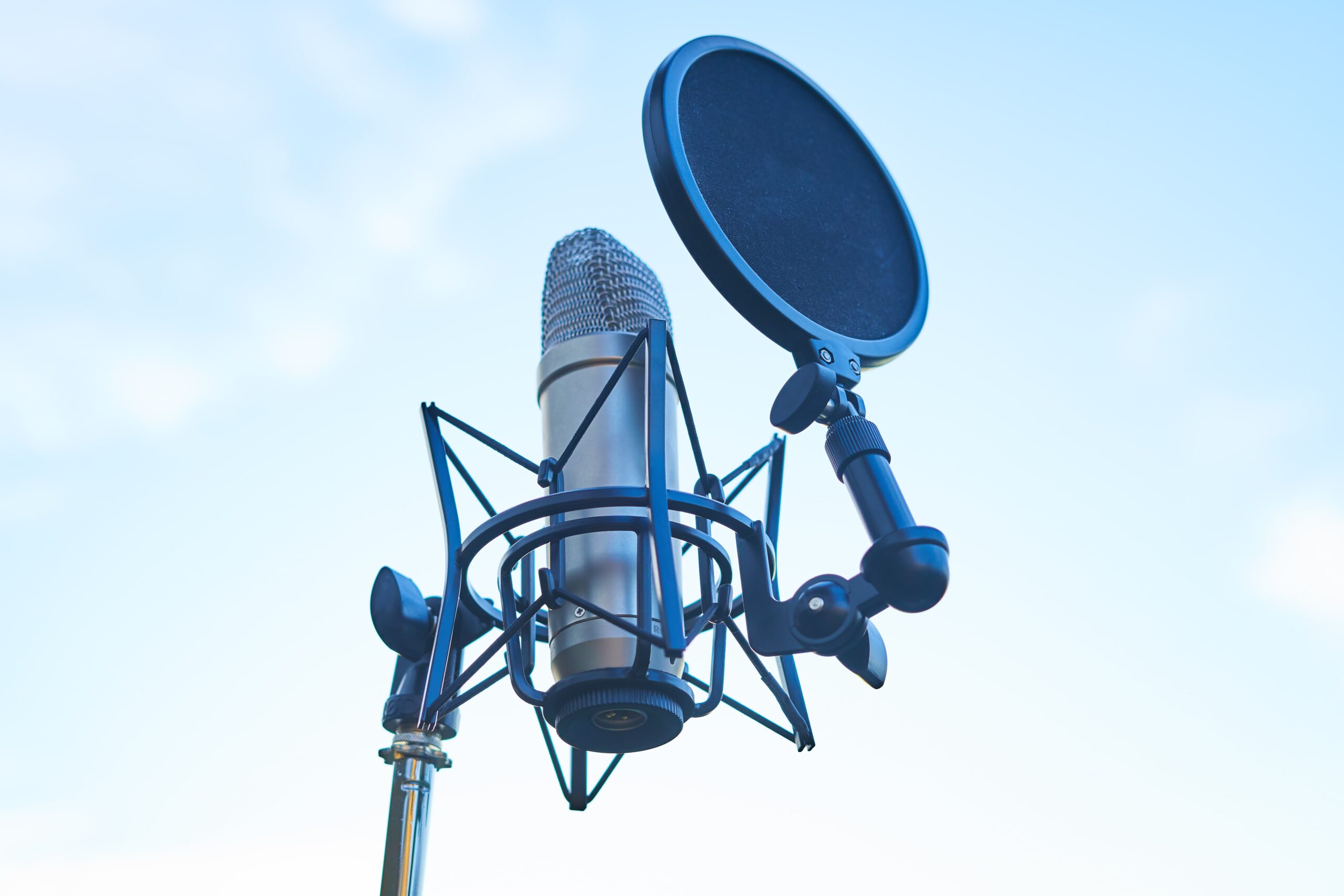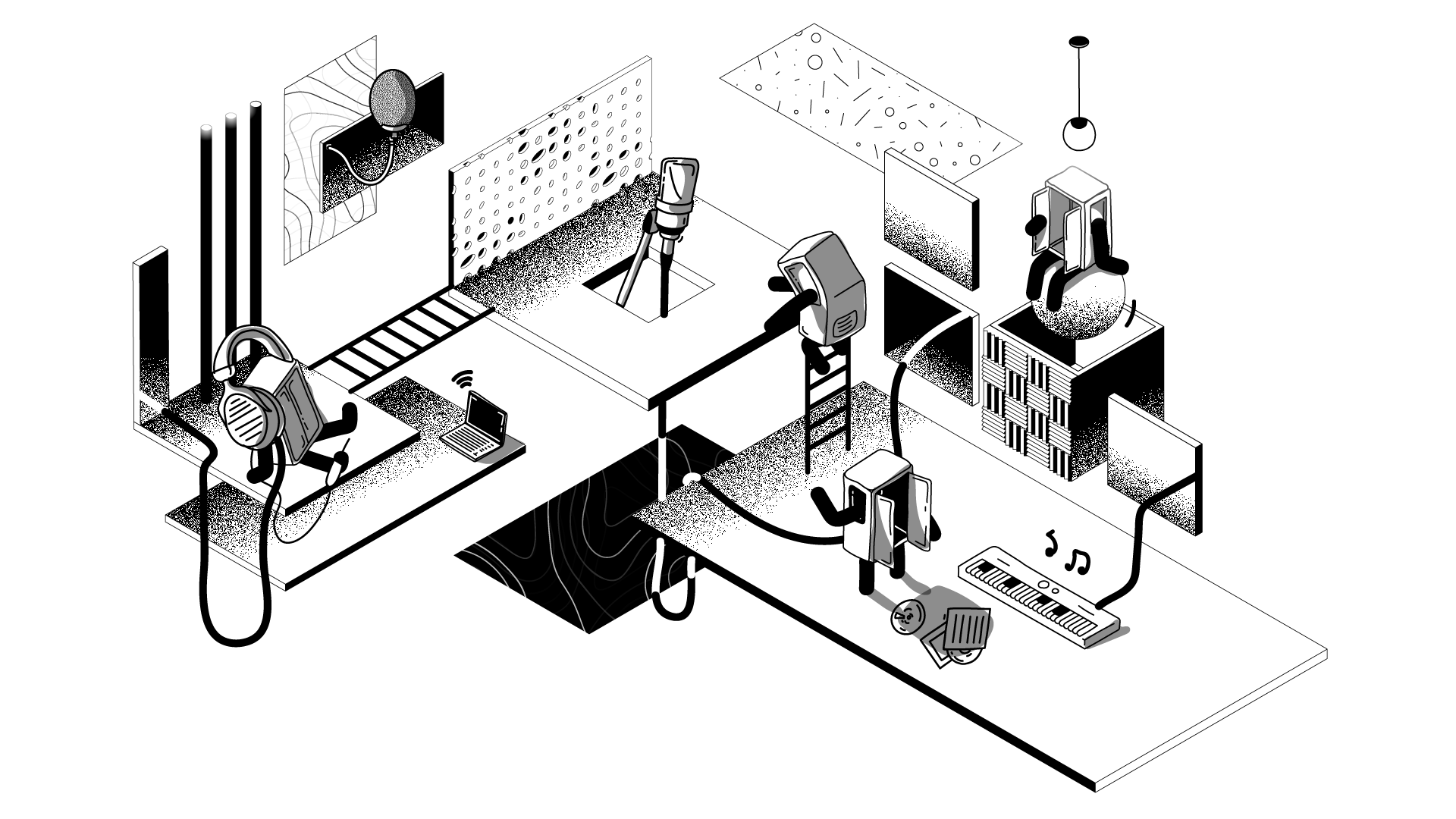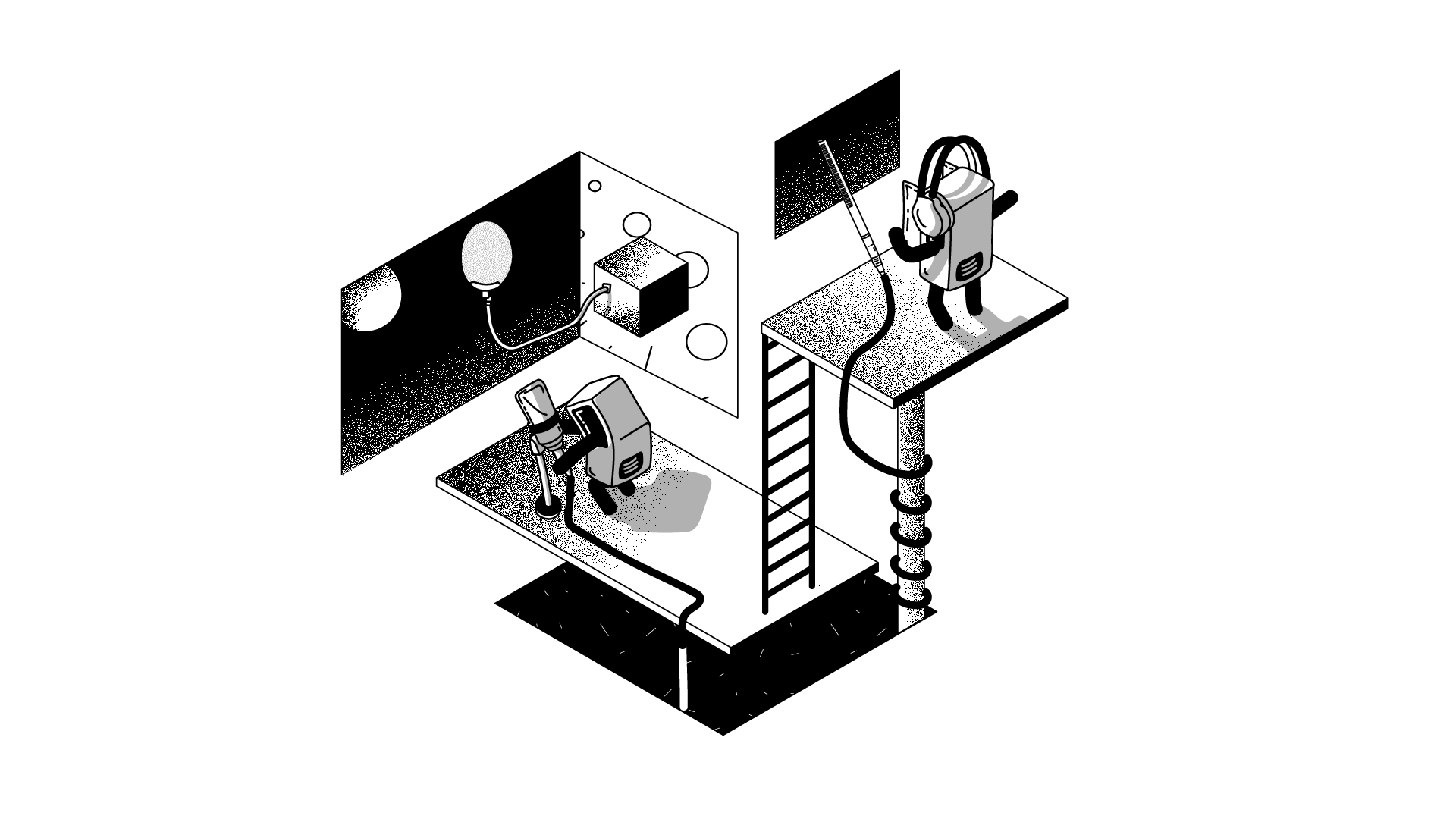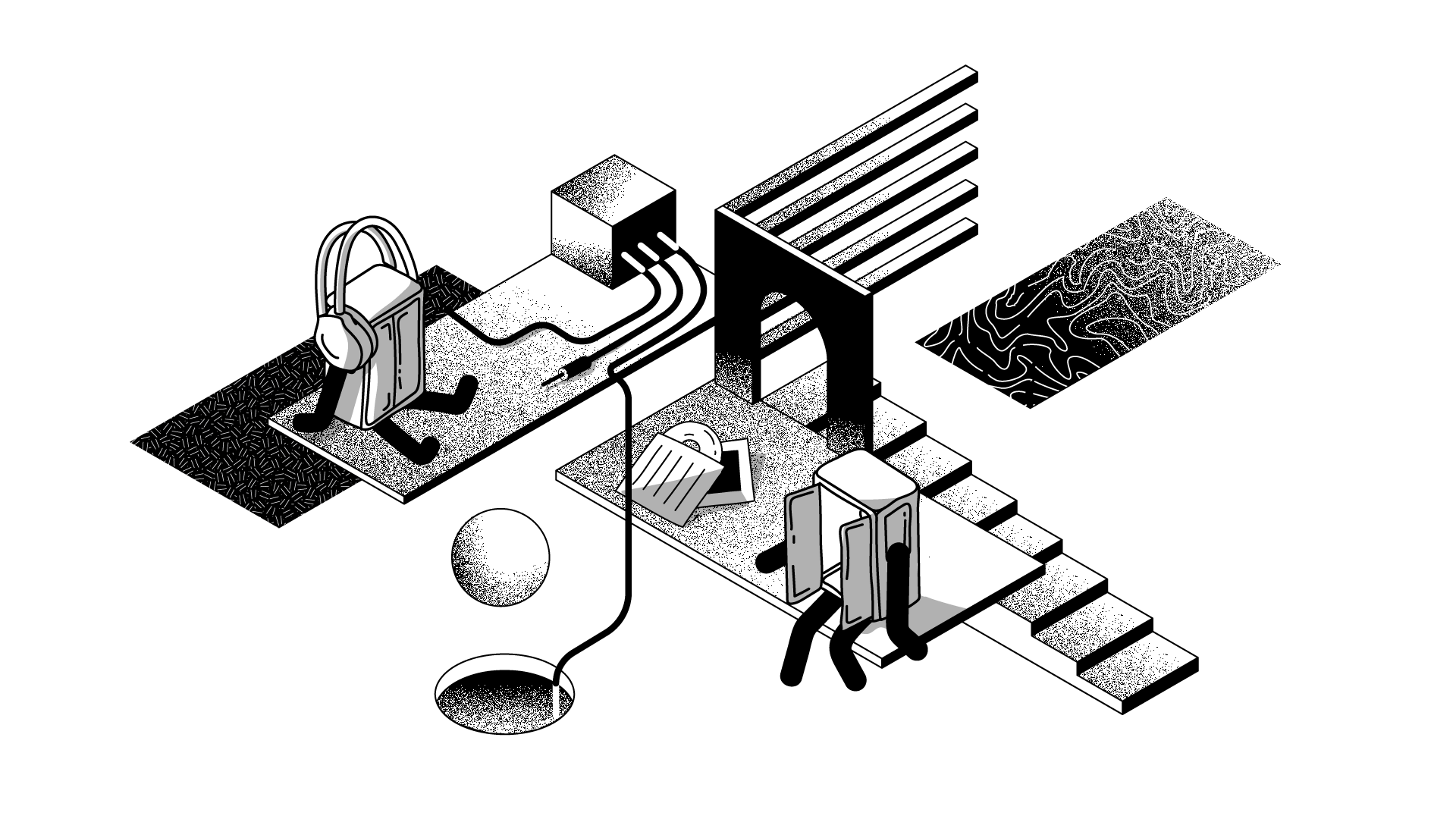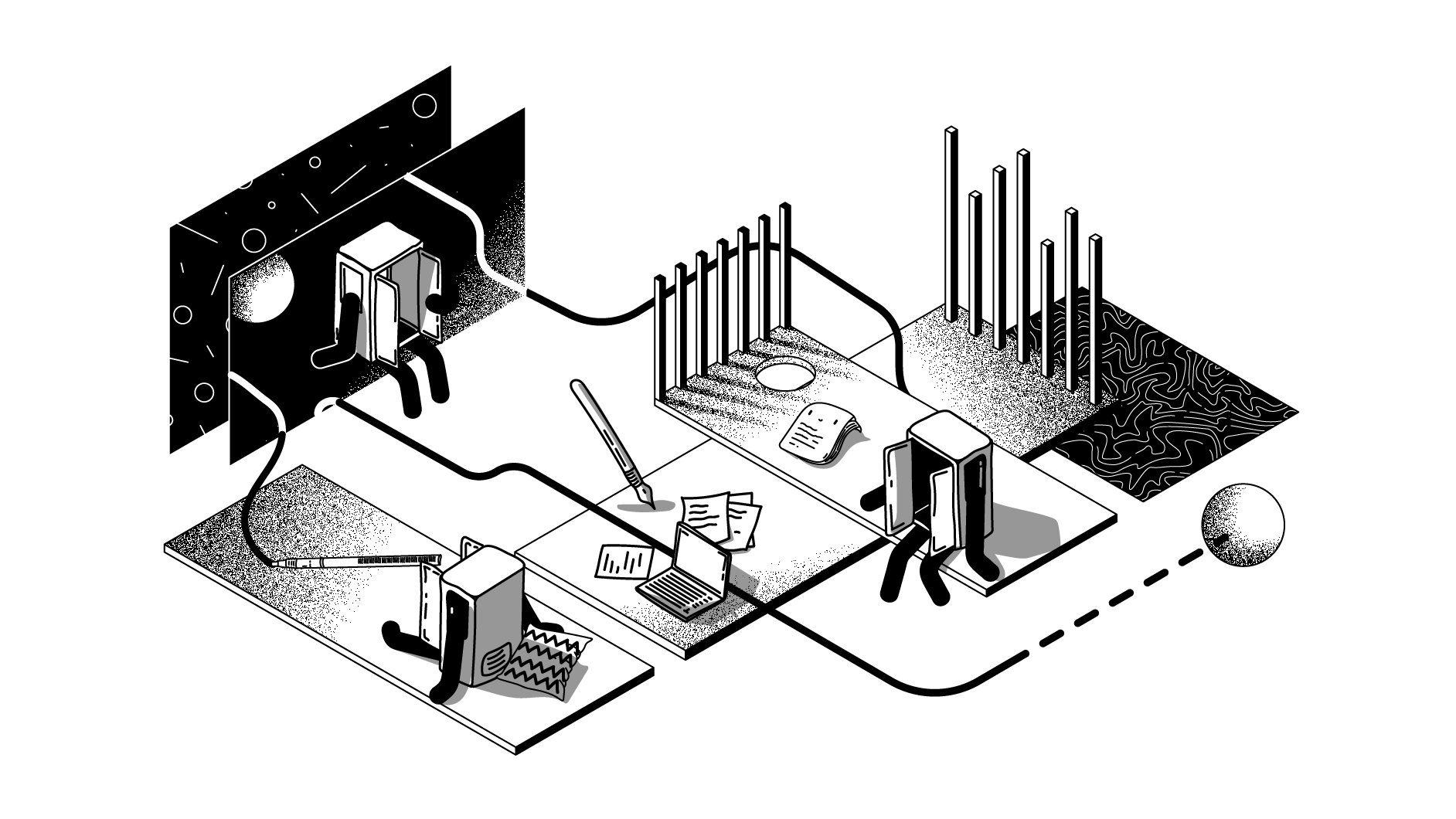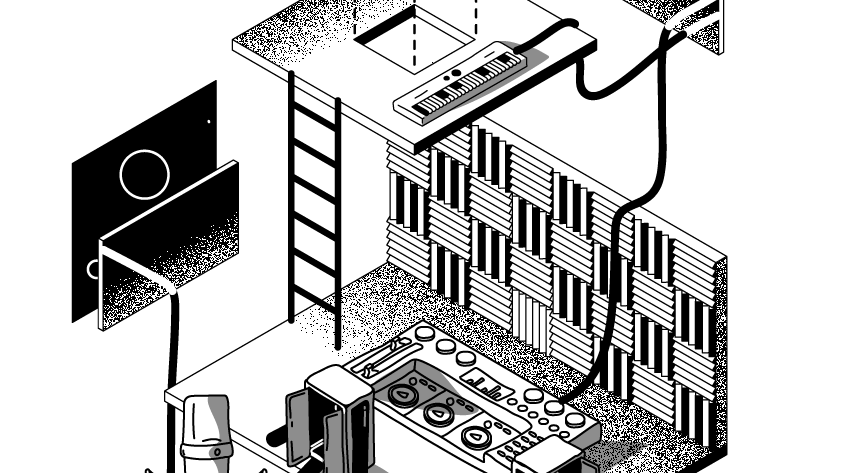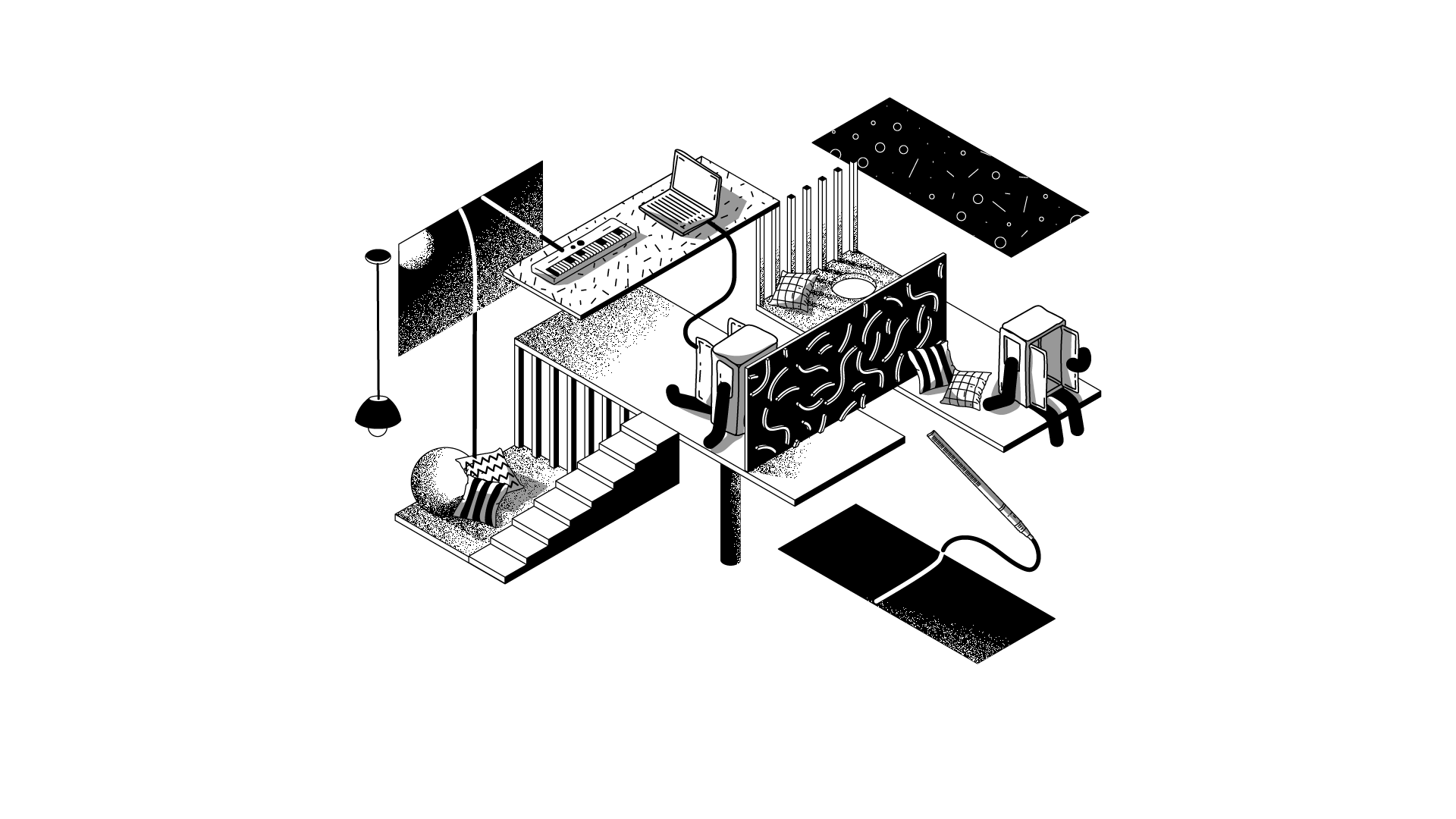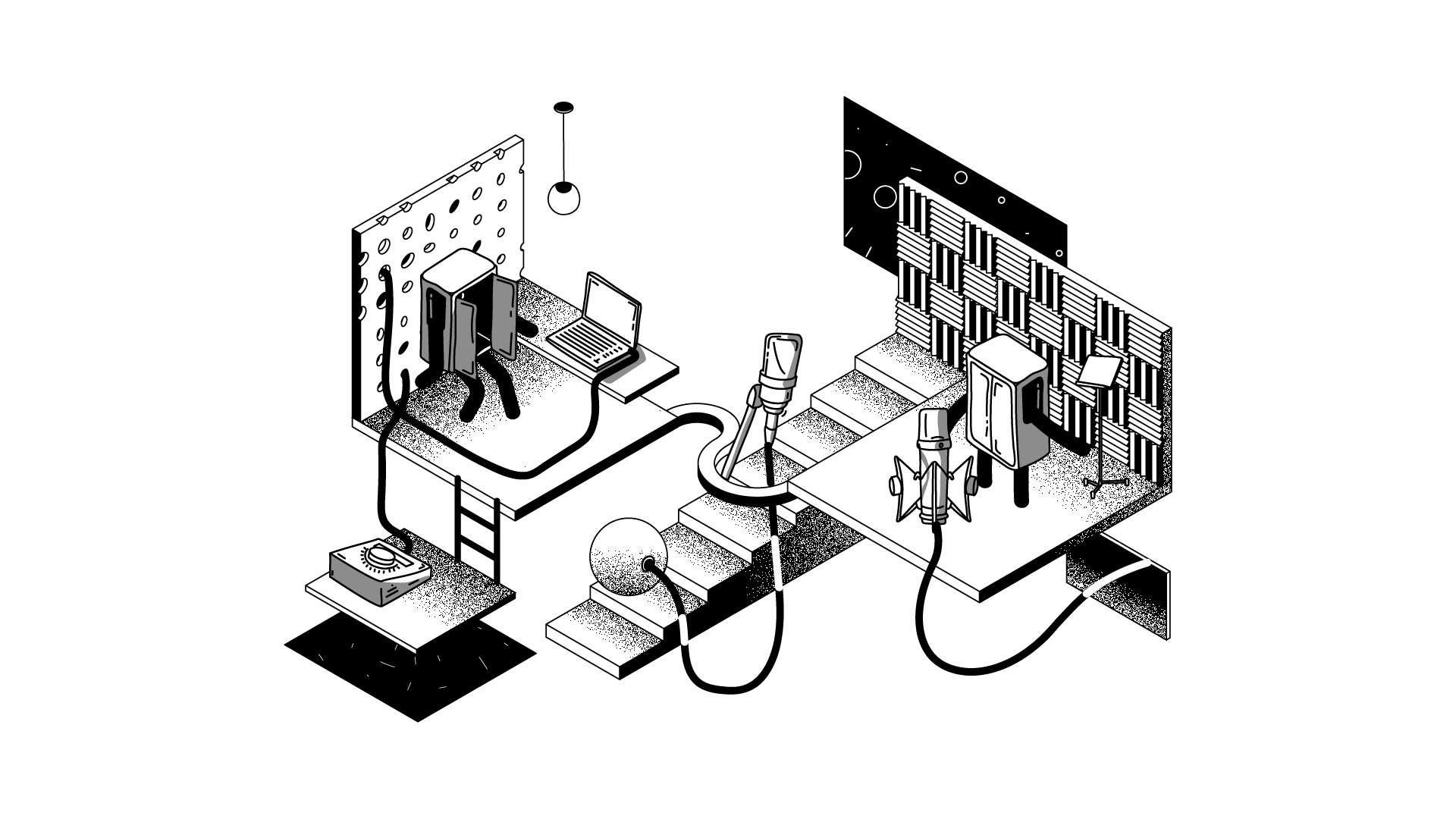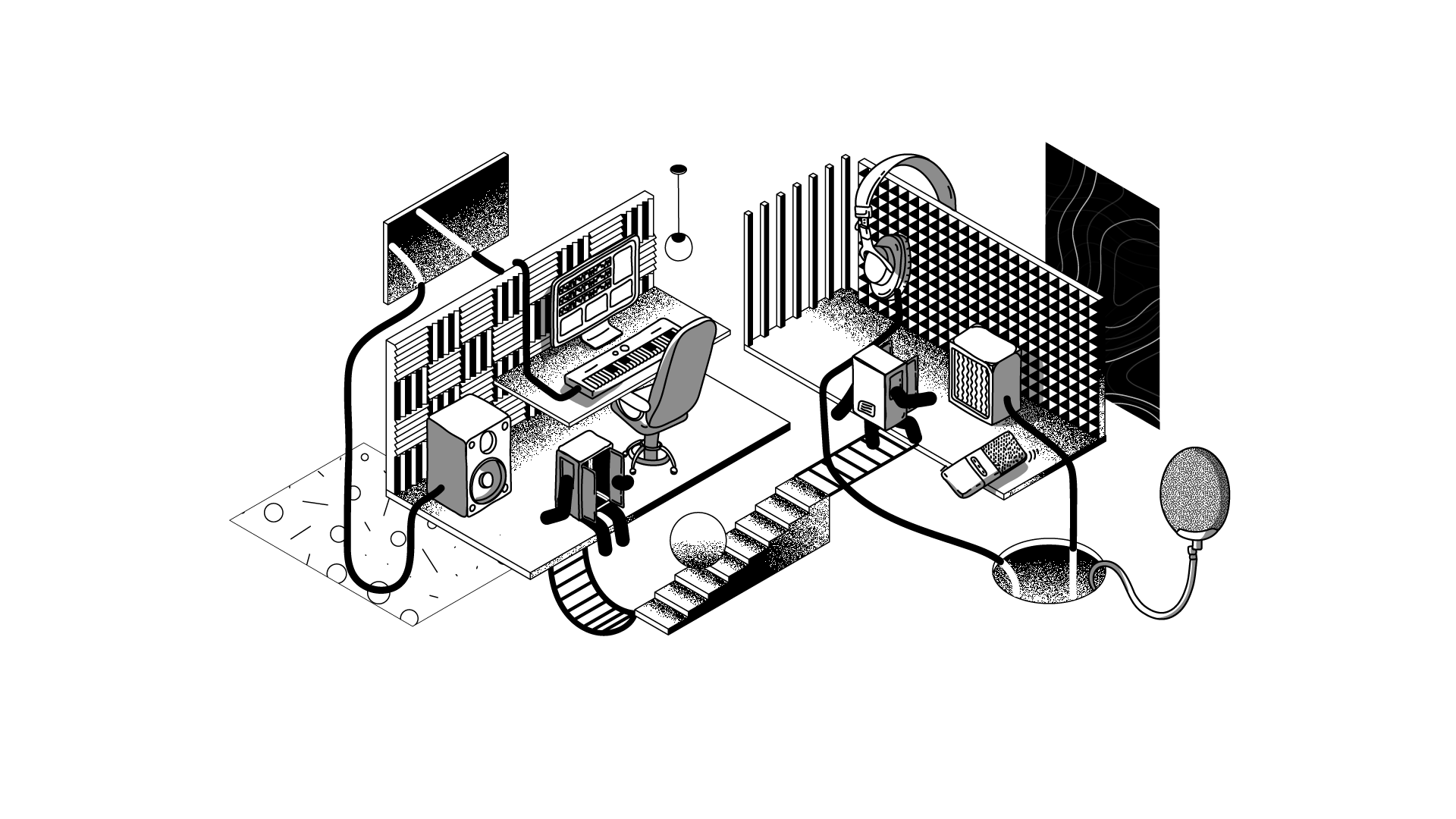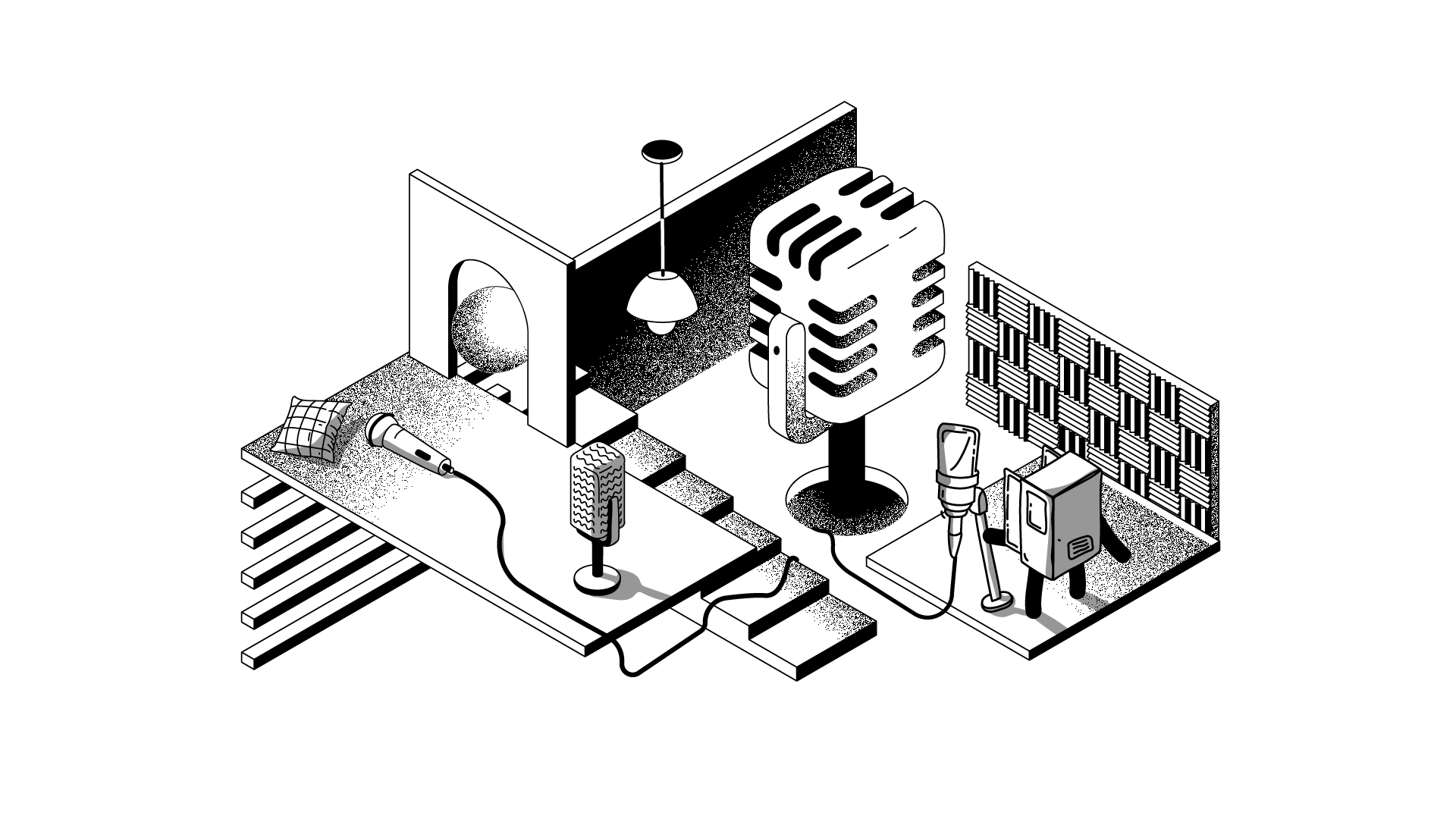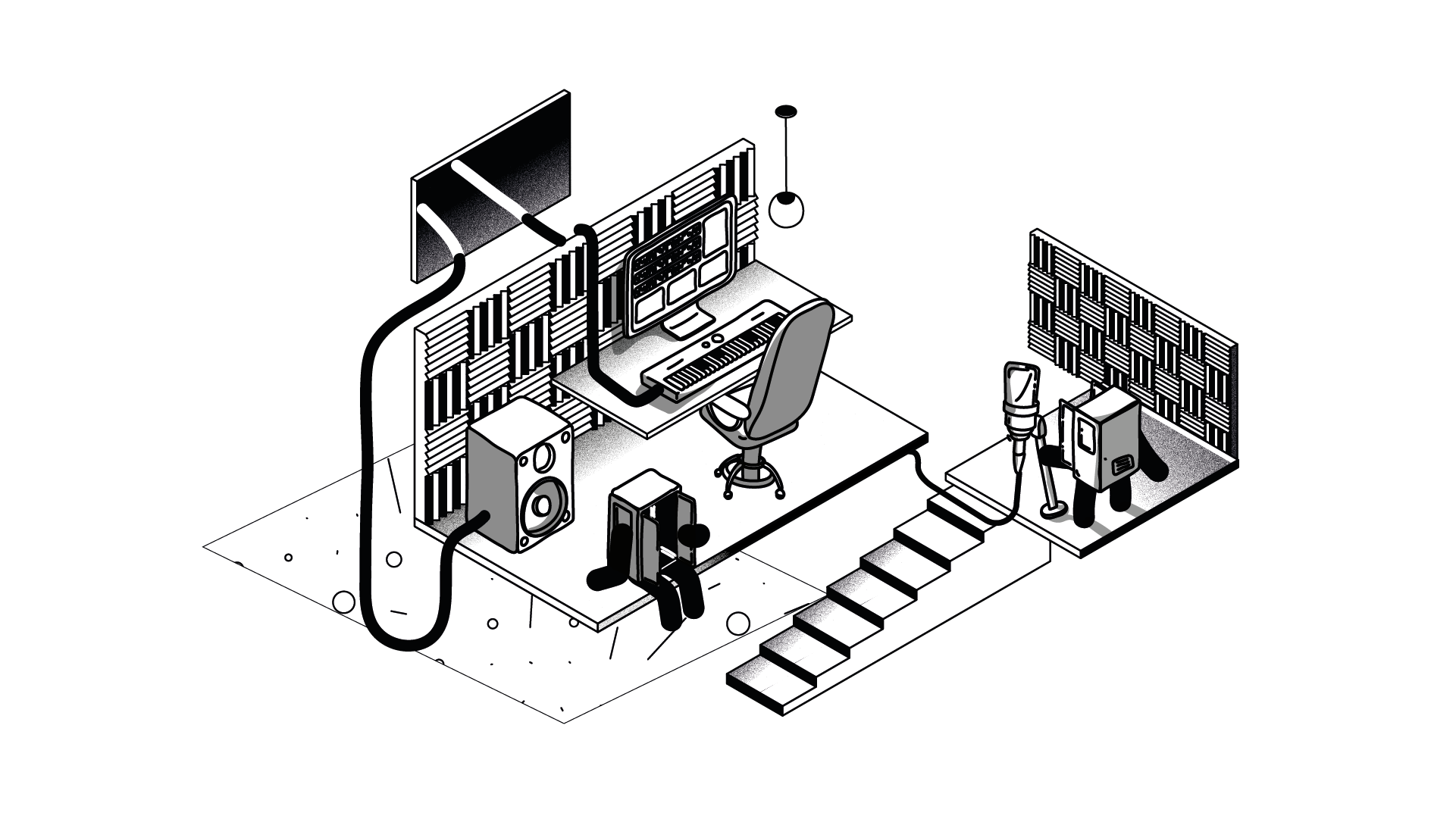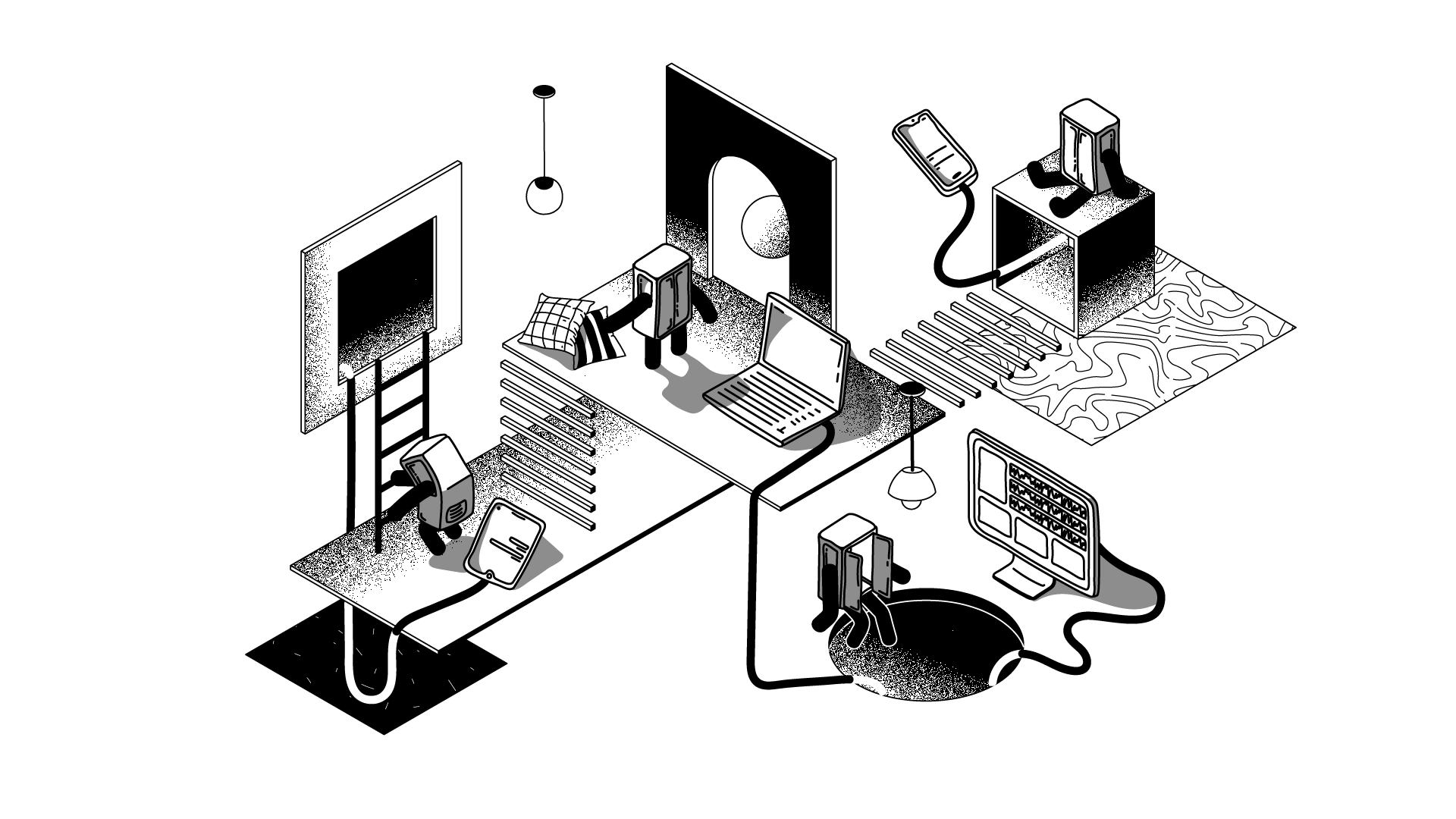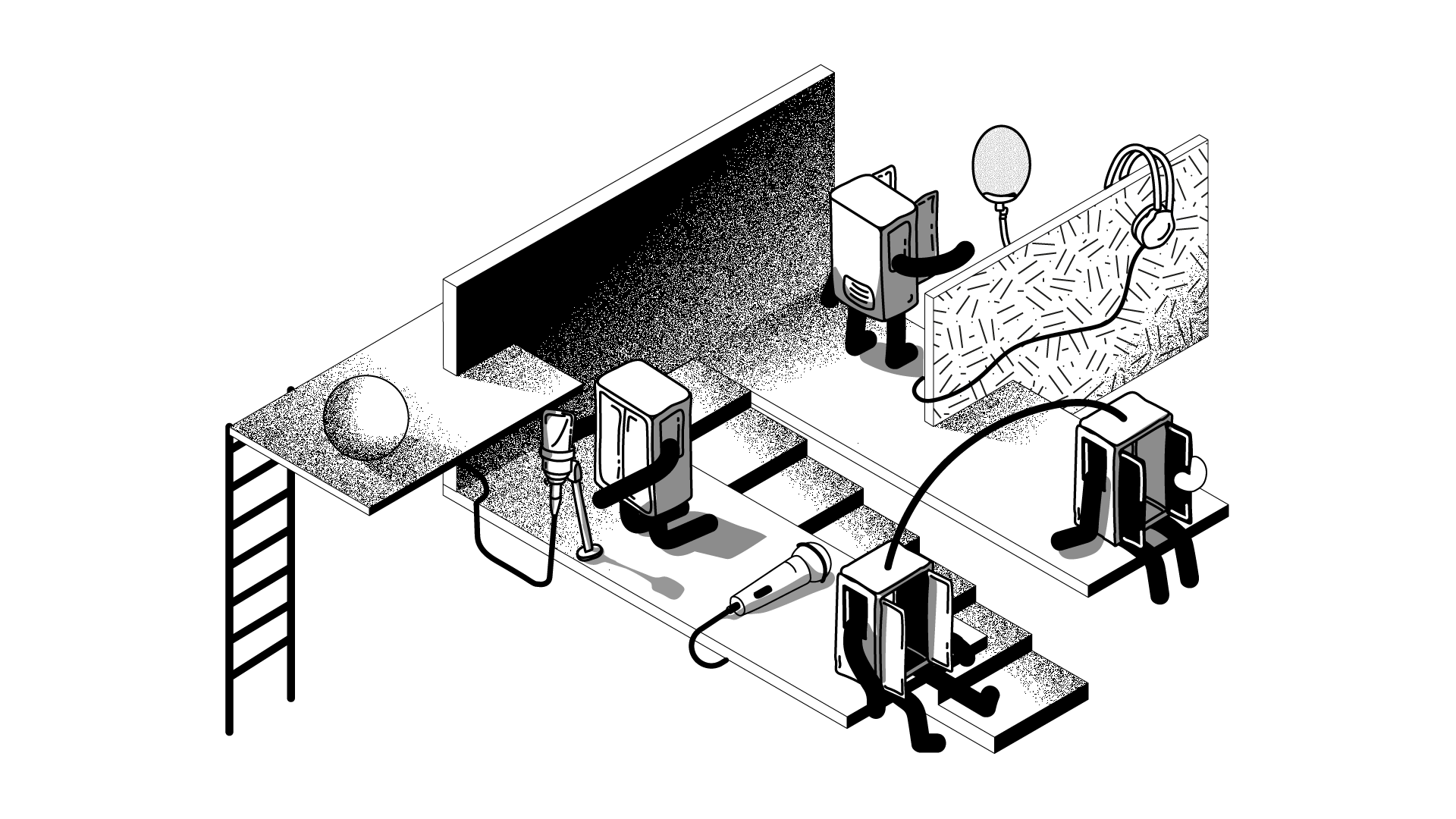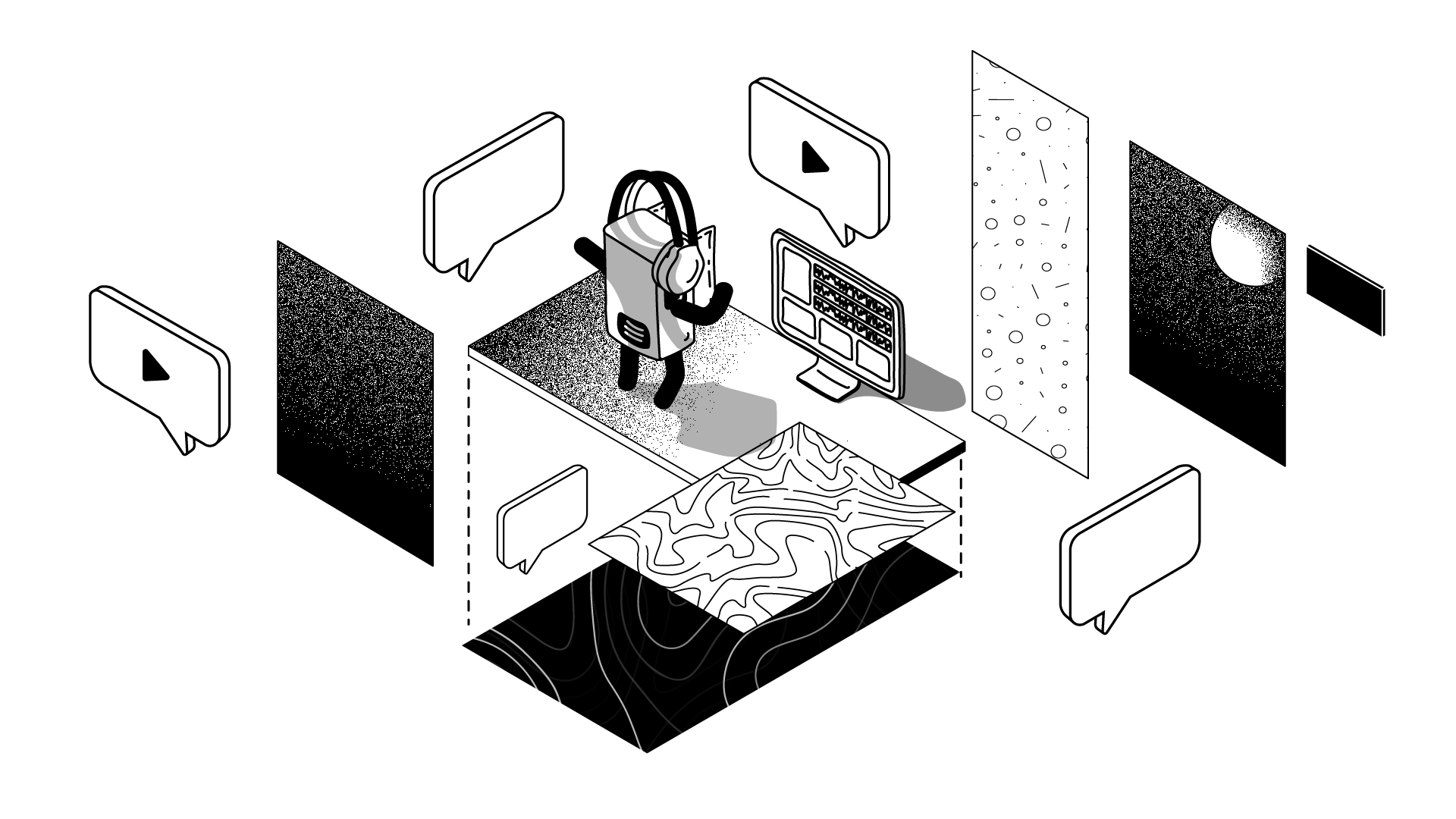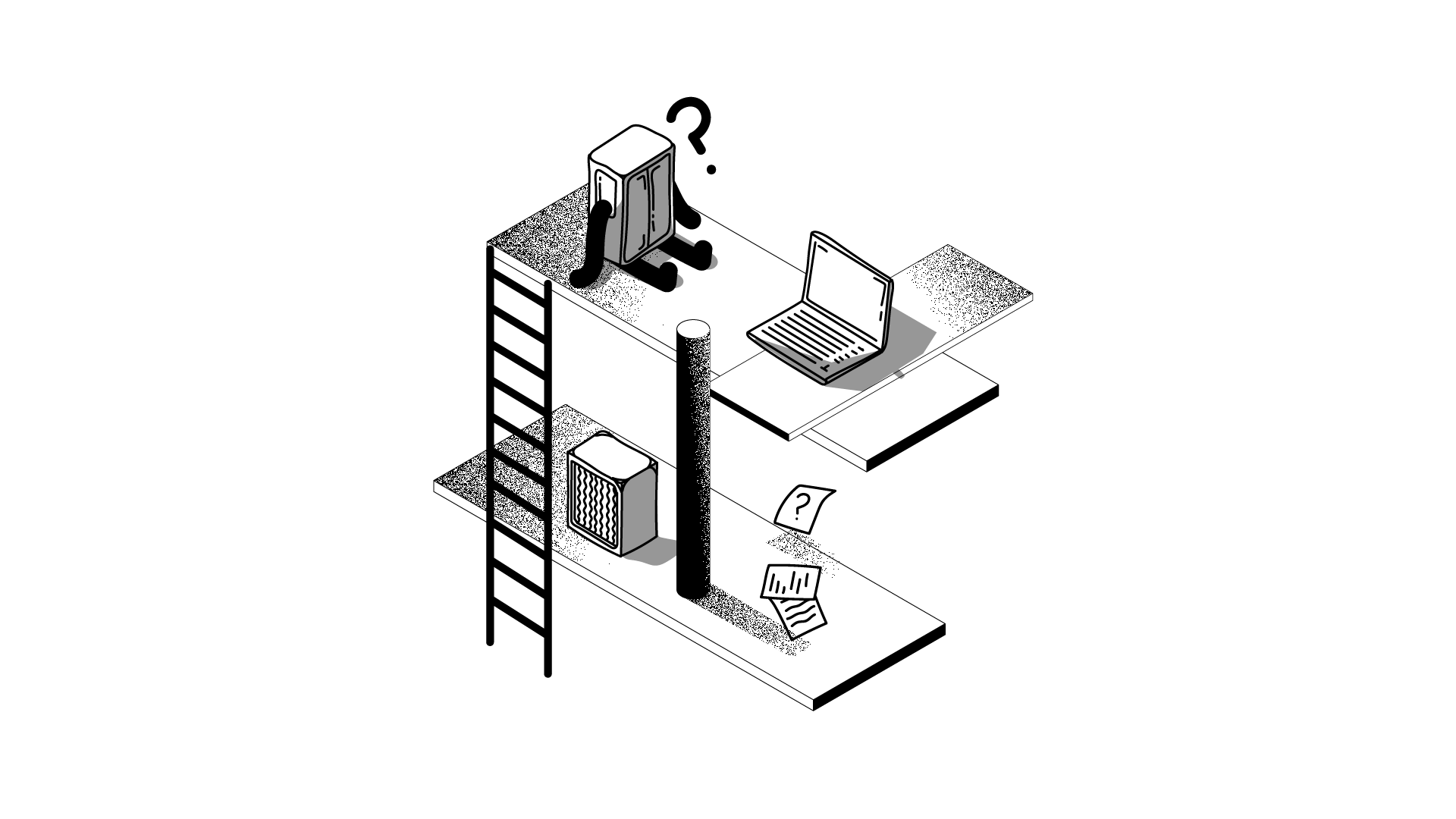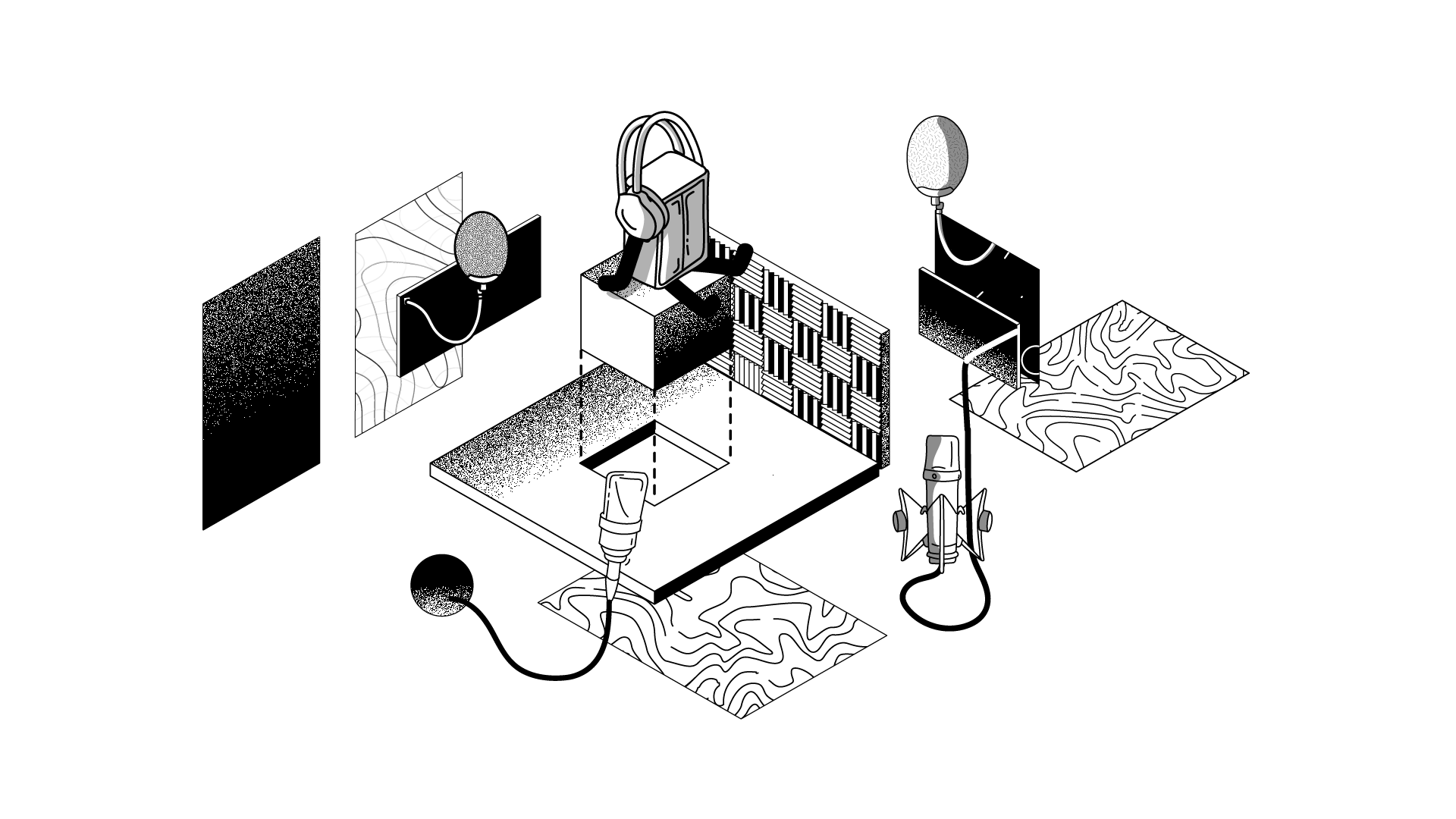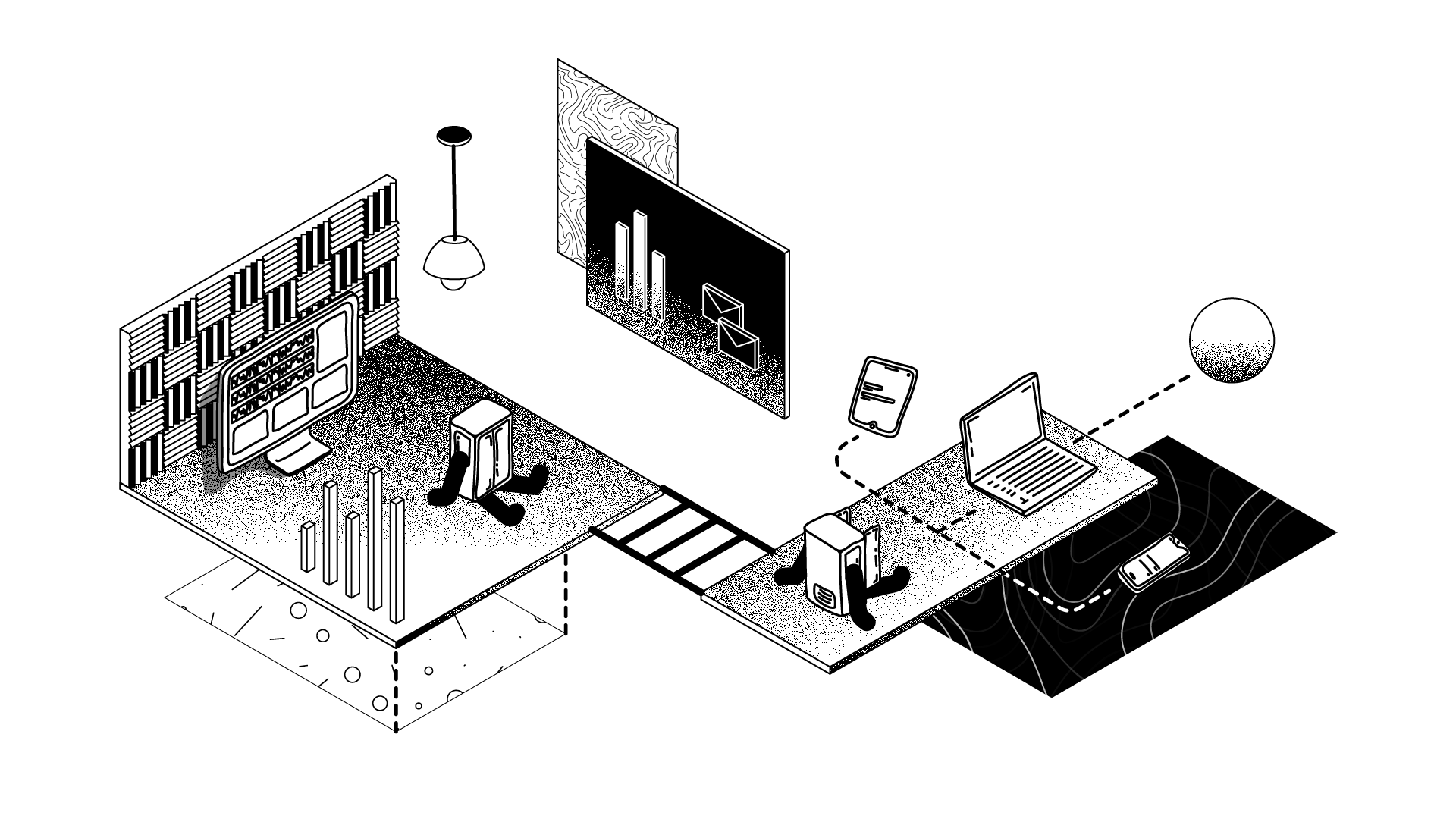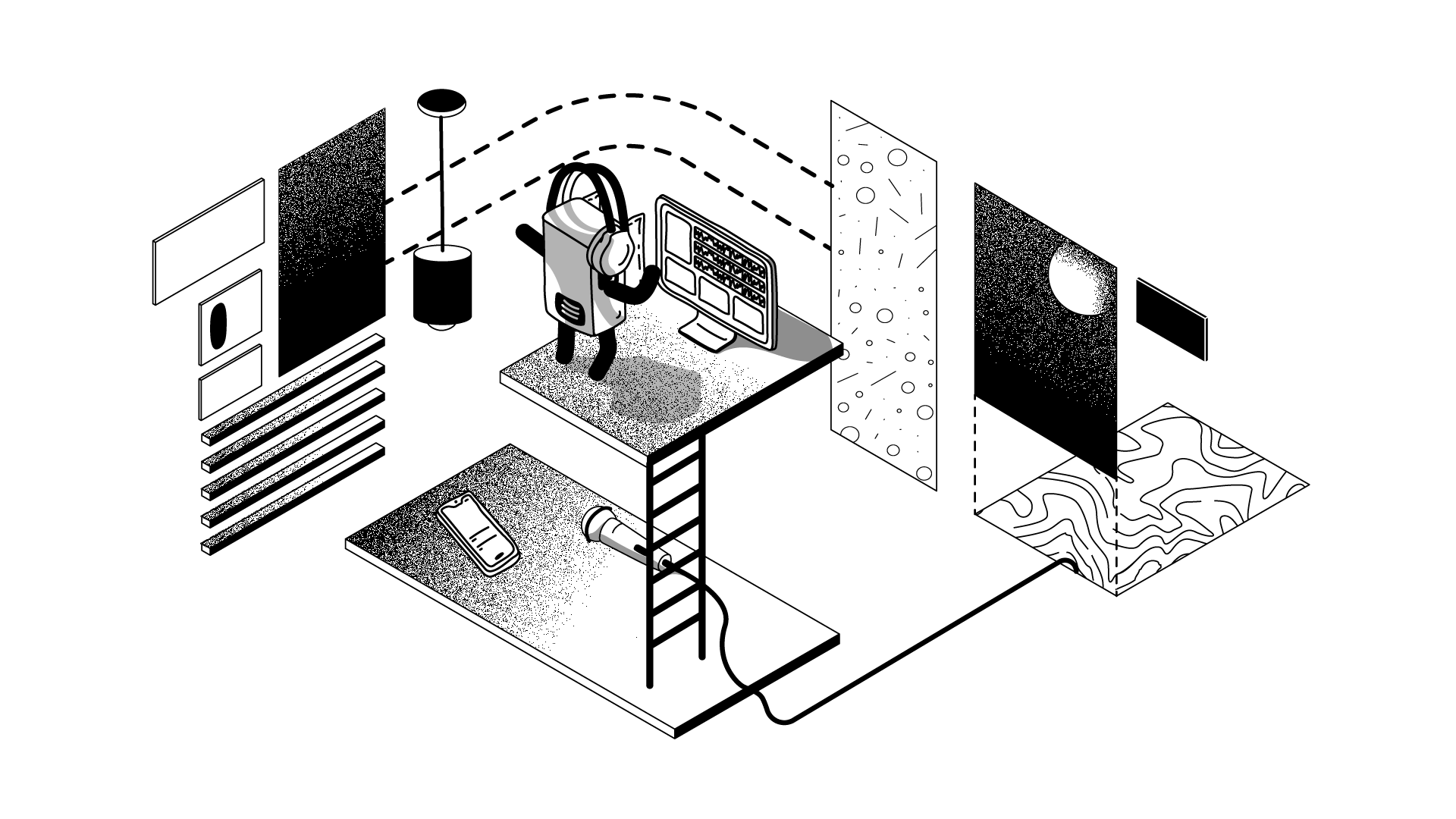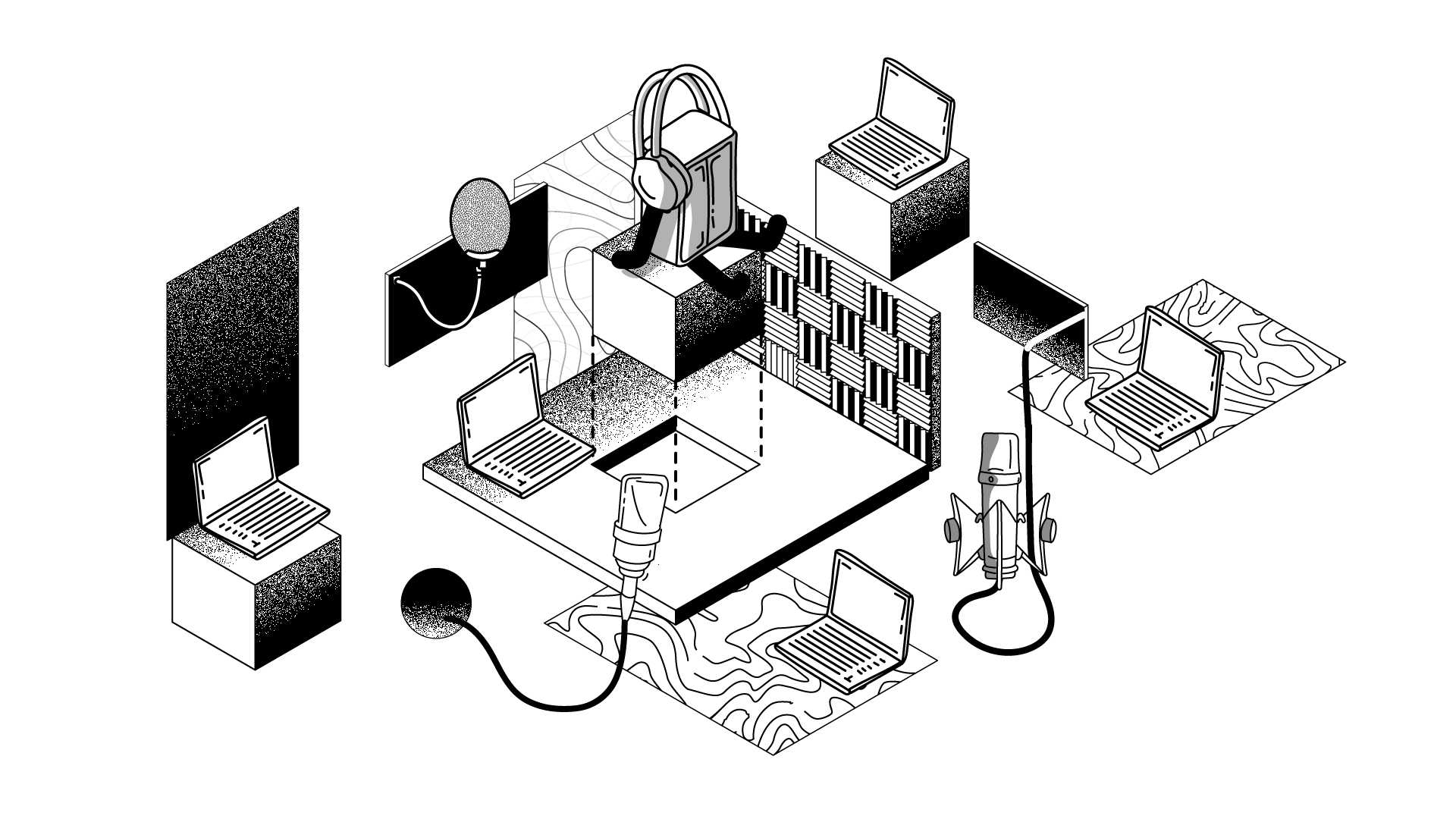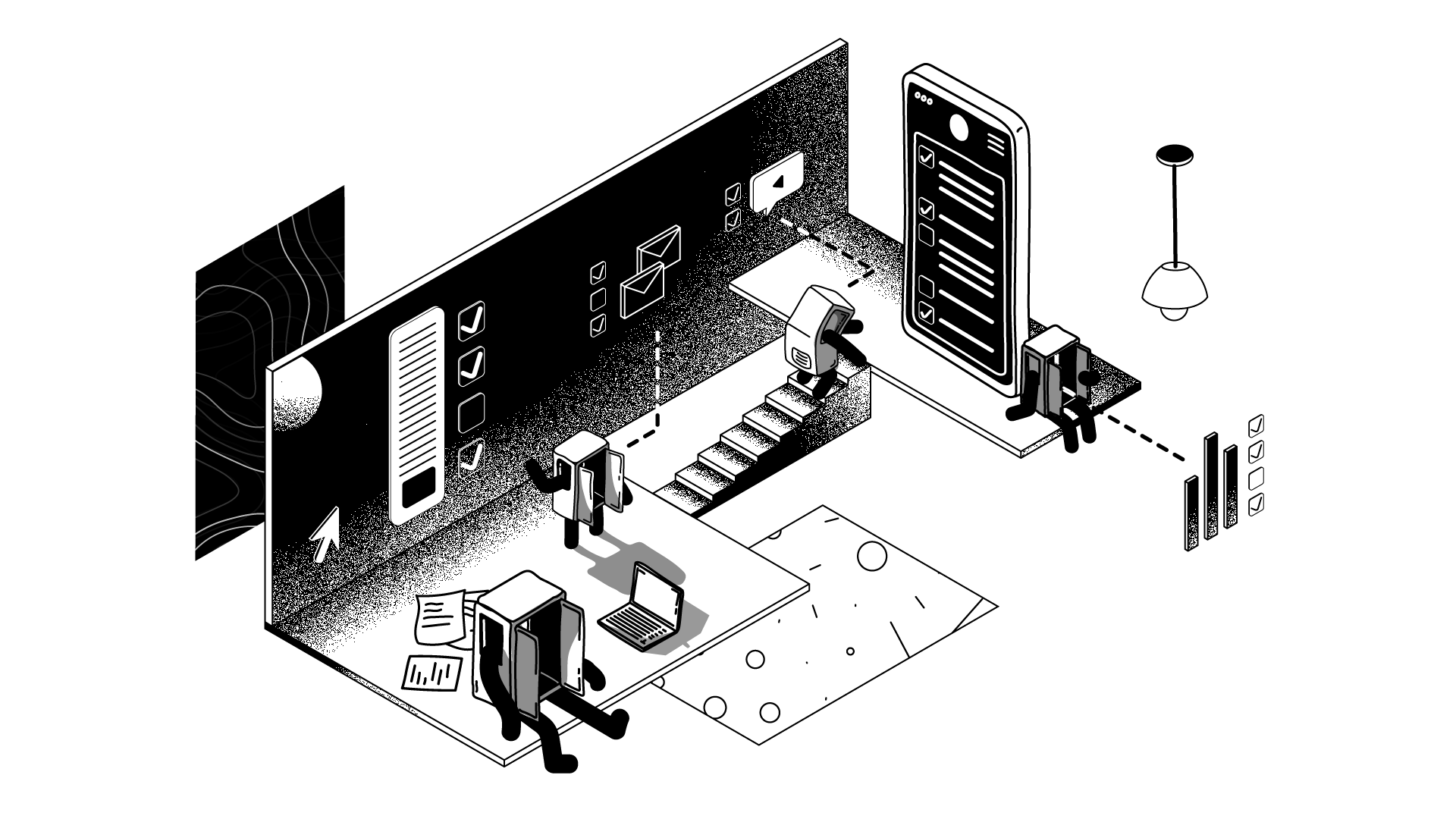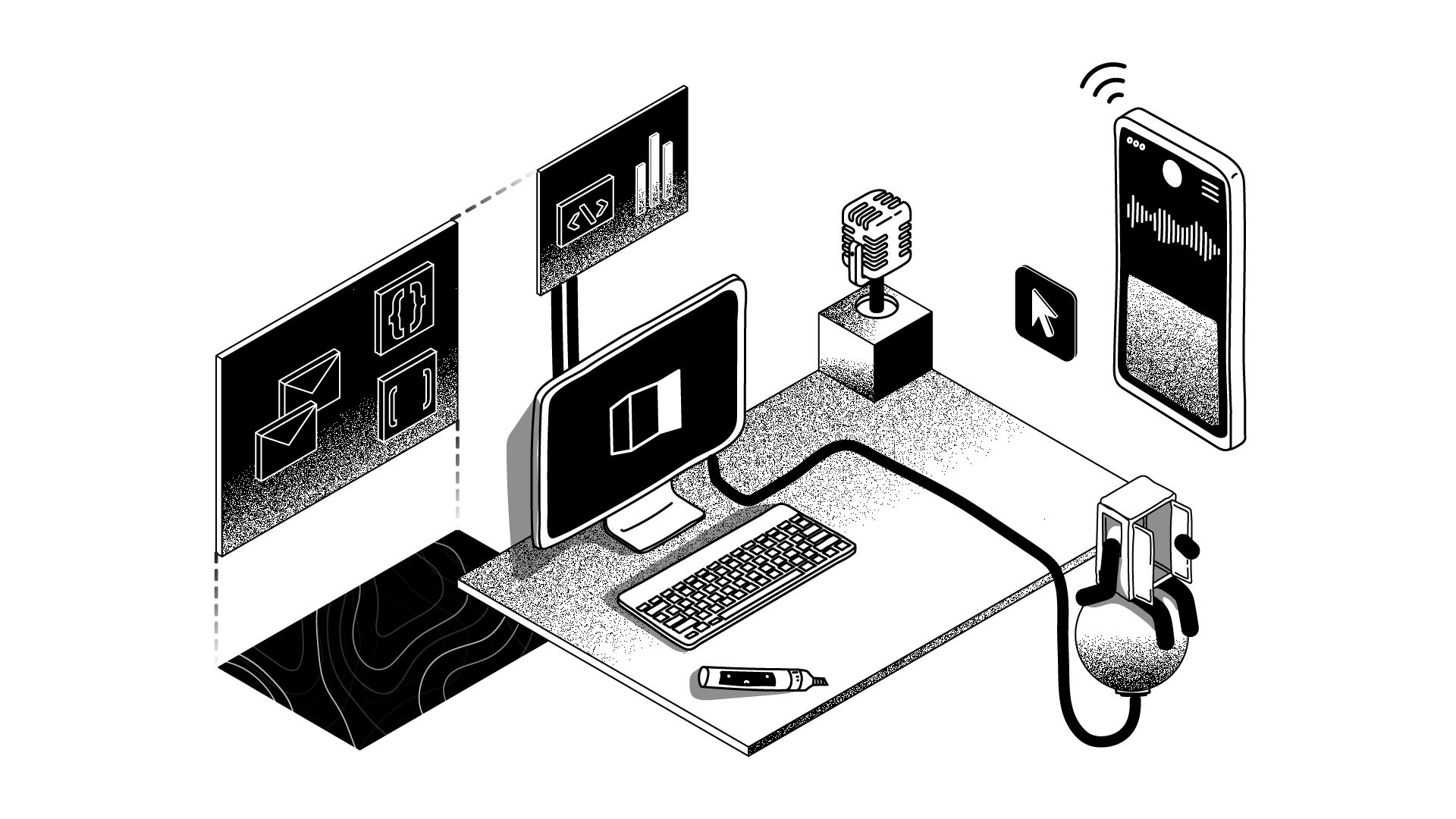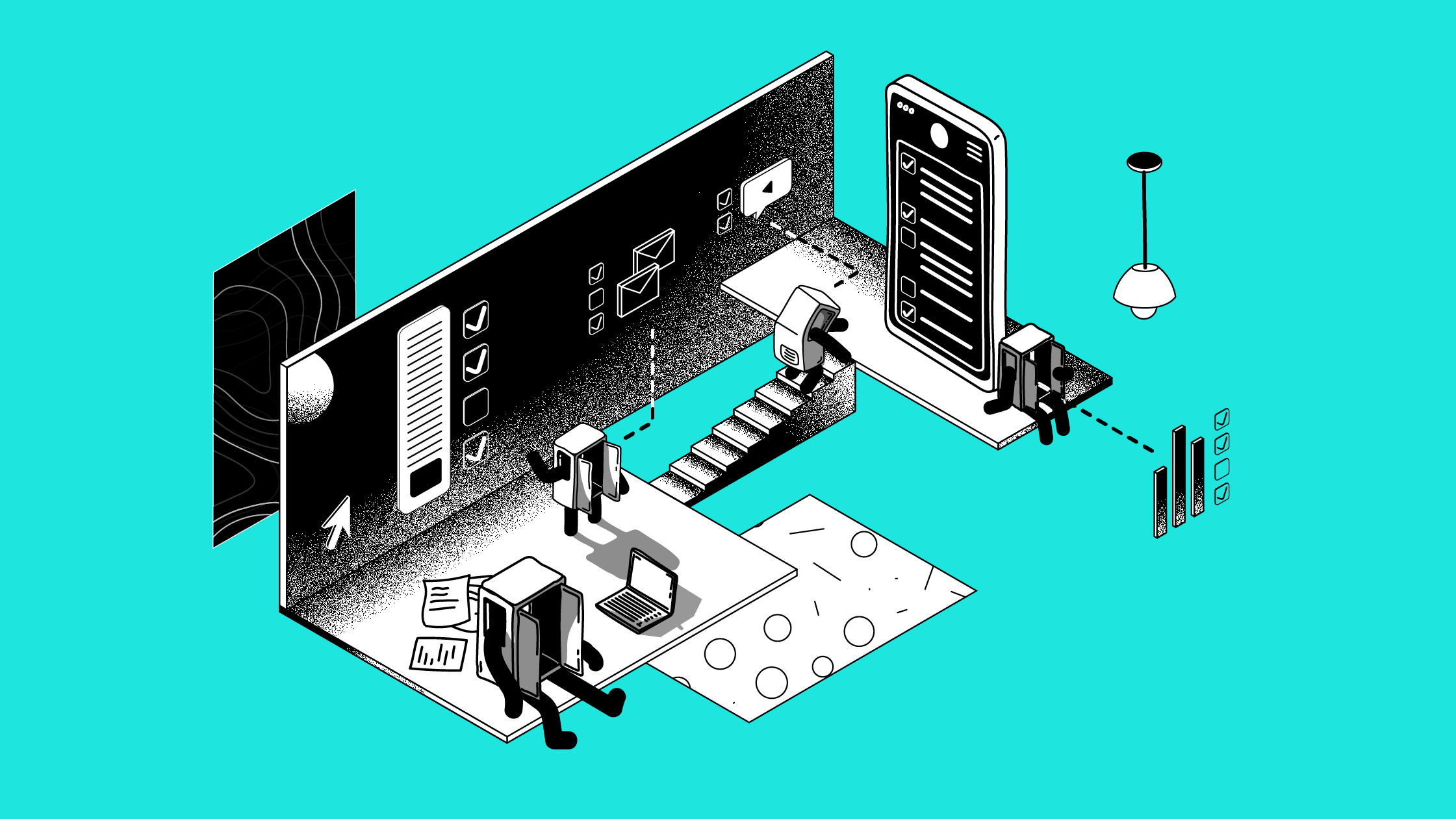What is a pop filter?
Pop filter, windscreen, pop shield, pop screen—however you say it, a microphone with a pop filter is key for recording pristine audio. But what is a pop filter, and how does it improve voice over recordings? Whether you’re starting your VO journey or just trying to step up your audio game, we’re sharing practical insights on the benefits of using a microphone pop filter.
What is a pop filter?
A pop filter is a device comprising a mesh screen or nylon filter that goes between the mic and a voice actor’s mouth to eliminate unwanted popping sounds usually caused by plosive consonants. Most plosive sounds result from bilabial consonants like the letters P and B. When a speaker’s top and bottom lips meet, the airflow path closes, forming a vocally explosive popping sound that’s audible without a pop screen. The sound is like balloons popping—a sudden rush of air hitting the microphone filter diaphragm, which causes disruptive exploding sounds in the recording. So, considering what a pop filter is can help you fine-tune audio to eliminate plosive distortions.
What does a pop filter do?
A microphone pop filter screens out those plosive and popping sounds through its fine mesh or nylon screen, so sound passes through while reducing or eliminating popping sounds caused by fast-moving air hitting the microphone. A microphone pop filter forms a physical barrier between the voice actor and the mic by intercepting and dispersing the airflow and capturing the full impact of plosives. It also helps even out the frequency response for a balanced audio signal without exaggerated low-frequency spikes caused by plosives. So, understanding what does a pop filter do enables you to prepare the best acoustic environment for your audio recordings.
Types of pop filters
A mic pop filter is usually inexpensive and available in multiple shapes, sizes, and materials. A microphone filter can be circular or in a semicircle shape angled over the grille, while others have a wraparound rectangular style for complete coverage. A microphone pop filter is also available in three different pop screen material options.
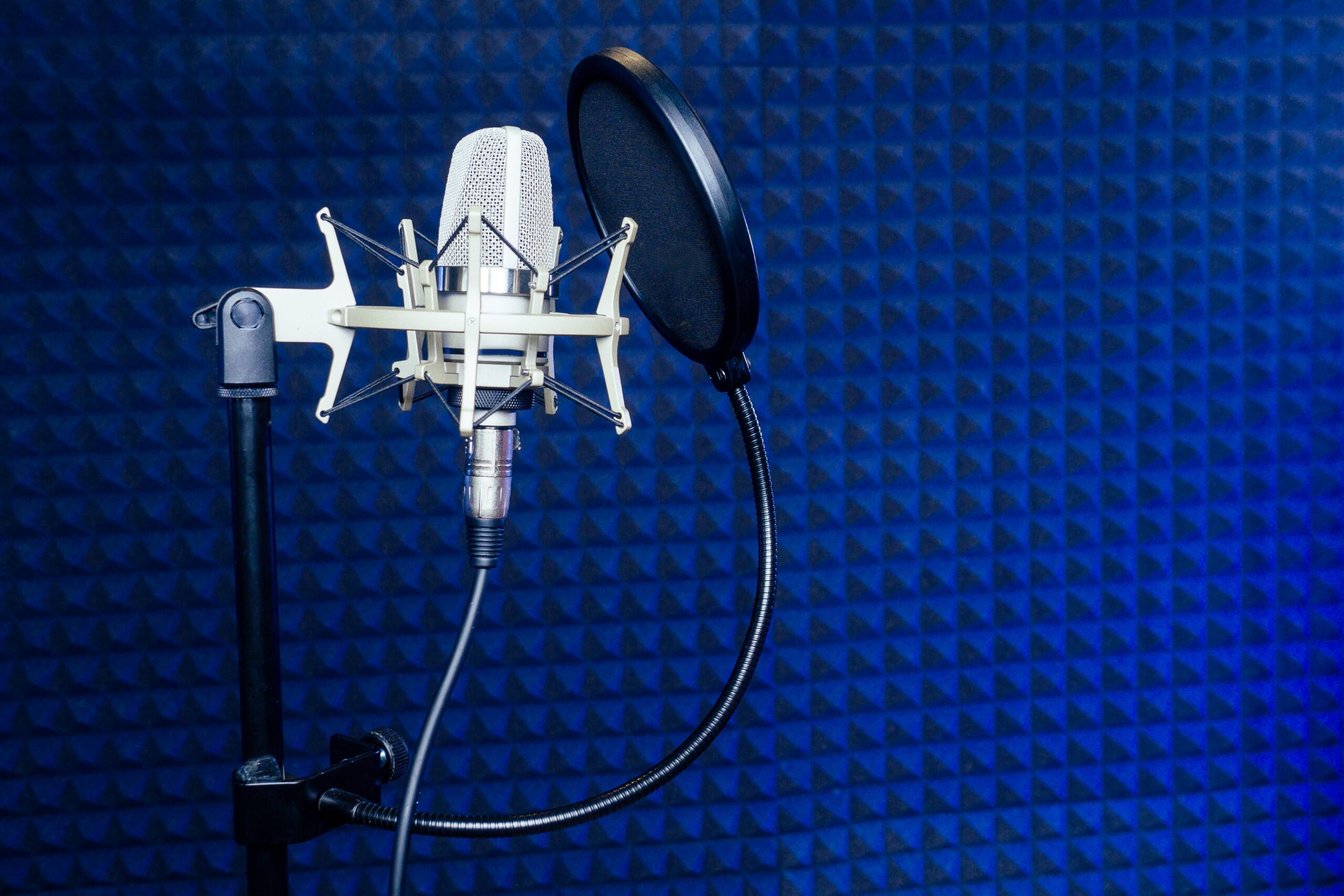
- Foam windscreens cover the microphone completely and fasten to a speaker’s clothing
- Metal mesh is an expensive metal screen that allows a wider range of frequencies to reach the microphone.
- Nylon mesh is an inexpensive woven nylon extended around a circular frame to reduce higher frequencies.
How to choose the best pop filter
- Type of filter: You can choose from a foam windscreen, metal mesh, or nylon mesh. Each one offers varying degrees of sound effectiveness.
- Mic compatibility: Your mic pop filter must suit your equipment size and type, from condenser to dynamic, for optimal sound quality.
- Adjustability: Look for adjustable goosenecks or flexible arms to position the pop filter microphone at angles that suit your height.
- Material quality: Consider lifespan and construction if the pop filter microphone offers better longevity and performance over time.
- Filter density: Some pop filters have multiple layers of mesh or foam for enhanced plosive screening without affecting voice clarity.
- User reviews: Read reviews from other voice actors for insight into the performance and durability of pop filters.
- Additional features: Look for extras like detachable screens, anti-vibration mounts, or compatibility with microphone shock mounts.
Popular brands include:
- Auray PFSS-55 is a durable microphone screen that filters without over-altering sound quality.
- Nady MPF-6 offers value with a dual-layer design that reduces plosives.
- On-Stage ASFSS6-GB provides excellent performance with a sturdy gooseneck for flexible positioning.
- Avantone PS-1 Pro Shield microphone with pop filter offers premium quality and plosive reduction.
- Shure PS-6 Popper Stopper is a reliable microphone screen for reducing pops and wind noise.
Conclusion
Whether you’re seasoned or just starting out, understanding what is a pop filter microphone can take your audio quality to a whole new sound level. The way a microphone screen works is simple but genius: no more pops and hisses sneaking into your recordings. From podcasting to commercials, radio ads, or audiobooks, a pop filter microphone is a must-have tool for refining audio quality so your voice sounds crisp and clear in every recording.
FAQ's
A pop filter reduces plosive sounds like “p” and “b” in vocal recordings, improving audio quality.
Yes, it does because it prevents harsh plosive sounds from distorting the audio.
While it’s not absolutely necessary, a pop filter can improve your recording clarity, especially if you record audio frequently.
Yes, it works in an emergency, but it might not be as effective at reducing explosives as a purpose-built pop filter.
